Nestled in the Yamashiro Basin between three majestic mountains on the island of Honshu is the city of Kyoto, Japan. This ancient city beckons and entices curious travelers from around the world with its glorious houses of worship, traditional food, and a rich history that dates as far back as the sixth century. With at least two thousand Buddhist temples and Shinto shrines within its limits, a wide variety of fascinating attractions, and countless food shops and stalls along its historic streets, there is no shortage of things to see and do in Kyoto.
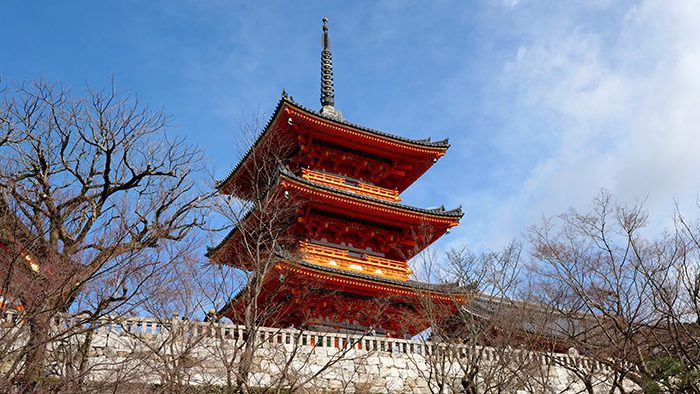
The low-slung buildings and houses of worship that make up the city, as well as the hints of tradition around every corner and its overall quieter atmosphere make Kyoto, which was the Japanese capital city for over a thousand years, a far cry from the bustling metal-and-concrete and neon-illuminated cityscape of the current capital, Tokyo.
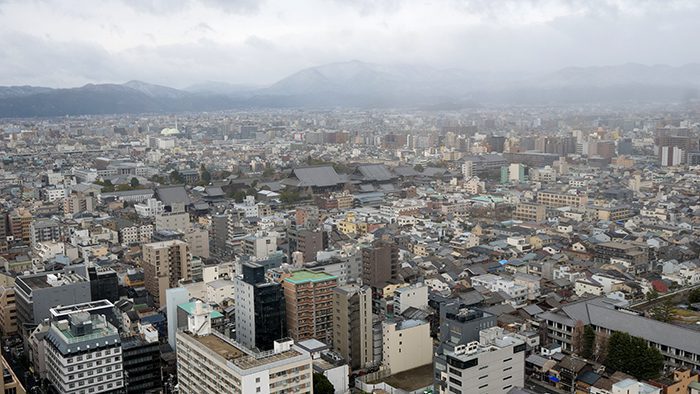
This is a city whose thousands of years of history and tradition can be felt from the moment you step foot inside its boundaries and one that will bewitch you with its beautiful culture time and time again throughout your stay. When visiting a city that offers as much as Kyoto does, figuring out your itinerary can be intimidating, so I want to help you out by sharing with you the things that captured my heart during my time there in January of 2019. These are the top 10 things to see and do in Kyoto!
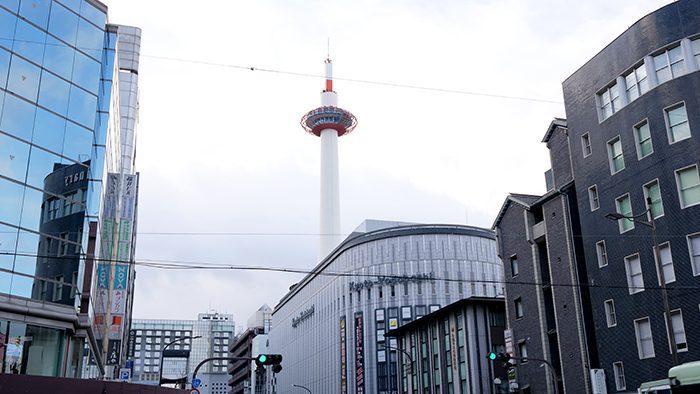
The first structure you’re likely to notice upon arriving in Kyoto is Kyoto Tower, an observation tower that rises high above the rest of the city. Located directly across from Kyoto Station, the tower stands atop a nine-story building that houses a three-star hotel and retail space. At 430 feet tall, this modern, steel observation tower stands in stark contrast to the other buildings in the city, which are much lower to the ground due to construction regulations that restrict how tall they can be.
Check out 15 Things to Do Near Tokyo, Japan
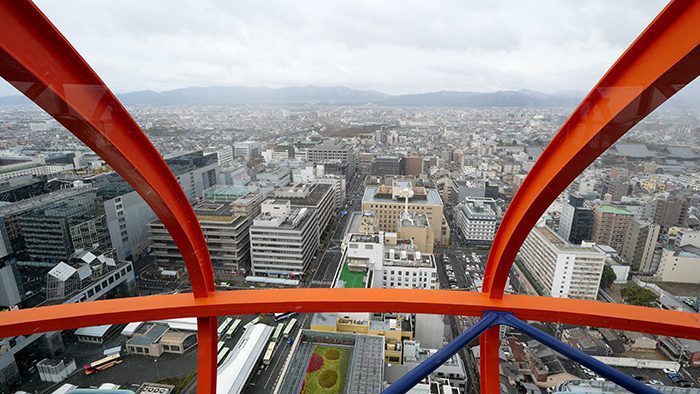
One of my favorite things to do when I travel is to get a bird’s-eye view of the places I visit, so I highly recommend buying a ticket to Kyoto Tower’s observation deck, which offers the best views in the city from 330 feet above the ground. The tower is open from 9 a.m. to 9 p.m. but the final admission is at 8:40 p.m., so be sure to keep that in mind if you’re looking to visit the tower at night.
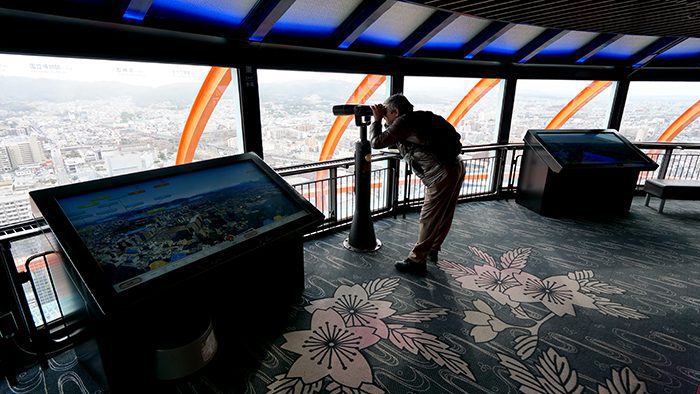
Ticket prices vary for high school students, elementary school students, preschool-age children, and people with disabilities, but mine cost 770 Yen, or roughly $6.93 U.S. It’s well worth the price, as the observation deck is pristine; it’s nice and clean, offers sensational views that you can inspect more closely from the binocular stands, and each of the deck’s windows have labels on them that tell you which attractions can be seen from that window. Don’t miss out on your chance to get a unique look at Kyoto that you can’t find anywhere else!

Located halfway up the mountainside of Mount Otowa in eastern Kyoto is one of the city’s 1,600 Buddhist temples and one of its most popular attractions, Kiyomizu-dera Temple. The temple was founded during the early Heian period in 778 AD as a holy place dedicated to the deity Senju-Kannon.

Though many travelers choose to skip Kiyomizu-dera Temple because it’s always packed with tourists, I think it’s still well worth a visit, as this massive, 130,000-square-meter temple complex consists of a whopping thirty buildings, including a grand main hall, which contains some of the most incredible woodwork I’ve seen in my life; a beautiful, towering pagoda; the Otowa-no-taki waterfall; a matchmaking shrine and Torii gate; and much more. The temple also offers spectacular views of the city!
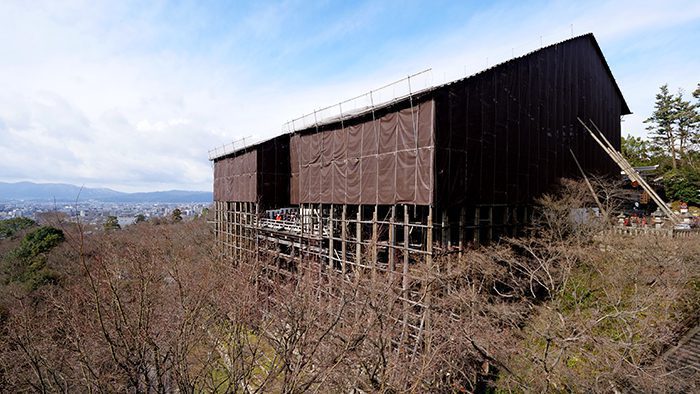
Many of the complex’s buildings have been rebuilt many times in its history, and most of the ones that stand today were built in 1633. Kiyomizu-dera Temple is an architectural marvel, as it was built using no nails, and is also a UNESCO World Heritage Site and one of the 17 Historic Monuments of Ancient Tokyo. If you’re interested in learning about Japanese Buddhist culture, a trip to Kiyomizu-dera Temple is definitely one of the top things to see and do in Kyoto! Just be advised: the temple is so expansive and there are so many stairs, touring it is a bit of a workout!
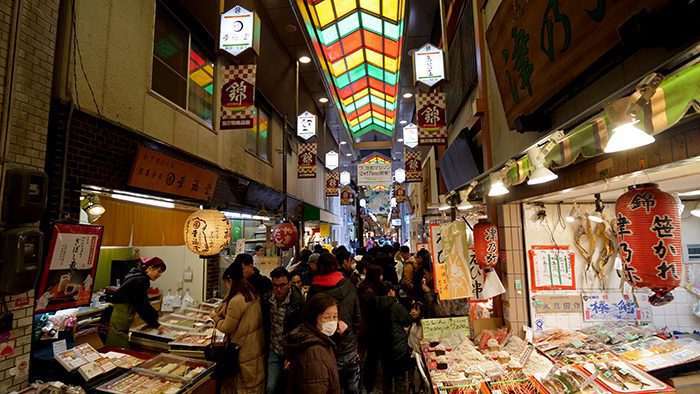
One of the best ways to get a taste of the mouthwatering flavors of Japanese cuisine is to visit one of the country’s many markets, and there’s none better in Kyoto than Nishiki Market, a narrow, five-block-long shopping street and historic marketplace in the downtown area that saw its first shop open in 1310. Today, the street is lined with food stalls, souvenir shops, a few sit-down restaurants, and even a fish market!
Check out Top 10 Things to Do in Singapore
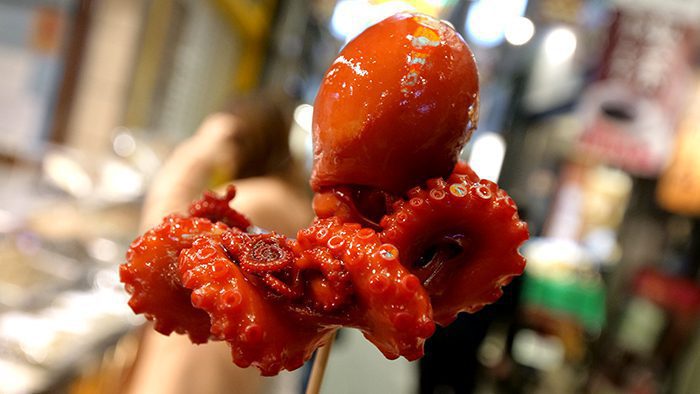
As you walk the narrow lane, affectionately called “Kyoto’s Kitchen” by locals, you’ll spot lots of curious items and delicious foods on either side of you, like live fish, bags of bonito flakes, white strawberries, sparrow meat, enormous oysters, hundreds of varieties of sake, sashimi, yakitori, tofu, unique types of mochi, and even tako tamago (cooked baby octopus that have been stuffed with quail eggs)! Don’t be shy—many stalls and shops offer free samples. Try as many as you can!
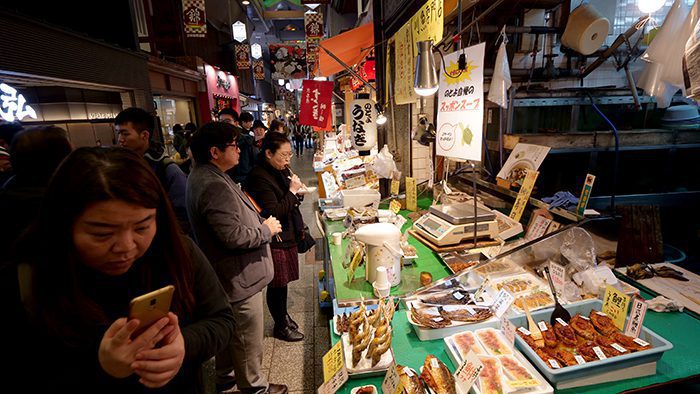
The best thing about the market is that most of the food is locally produced, so you know it’s fresh and authentic. And even though the market is only 1,200 feet long from beginning to end, it’s a constant feast for the eyes and your stomach—and a treat for your taste buds!
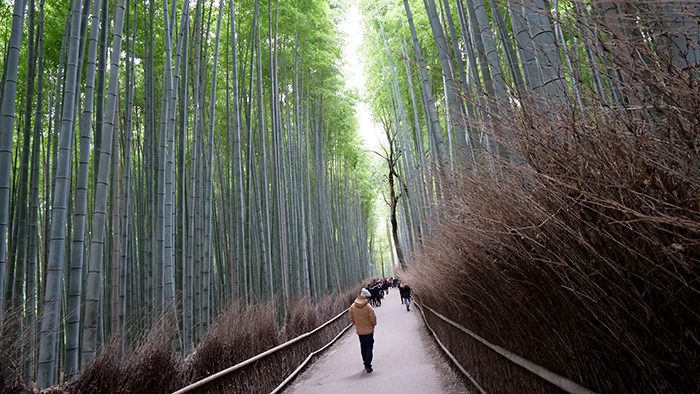
No trip to Kyoto is complete without spending some quality time at the Arashiyama Bamboo Grove, a sprawling and serene natural bamboo forest that boasts a picturesque main path that is lined with thousands of massive bamboo shoots that tower above it. While the bamboo shoots may look like individual plants, my guide Kosuke (who I highly recommend you hire to show you around the city) explained to me that they are all one organism with a shared root system, and that the bamboo in the forest can grow up to 60 feet per month!
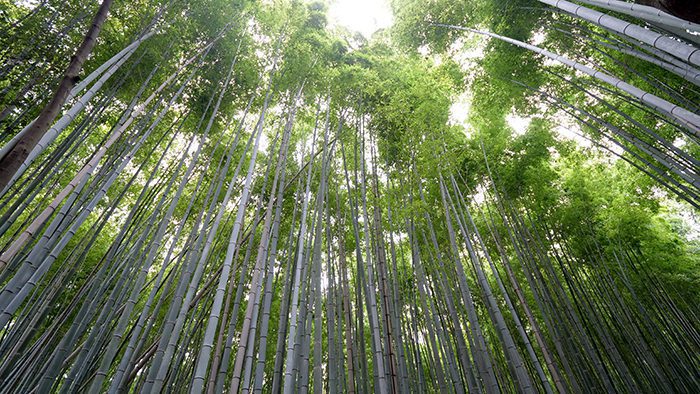
Even though the Arashiyama Bamboo Grove is one of Kyoto’s most popular and most photographed locations, it still retains a peaceful, tranquil atmosphere that no photograph can ever truly depict. It’s one of those places you have to experience for yourself to truly understand its magic. It’s beautiful and serene and the air smells so pure and fresh. It feels very spiritual and almost otherworldly and is easily one of the top 10 things to see and do in Kyoto.
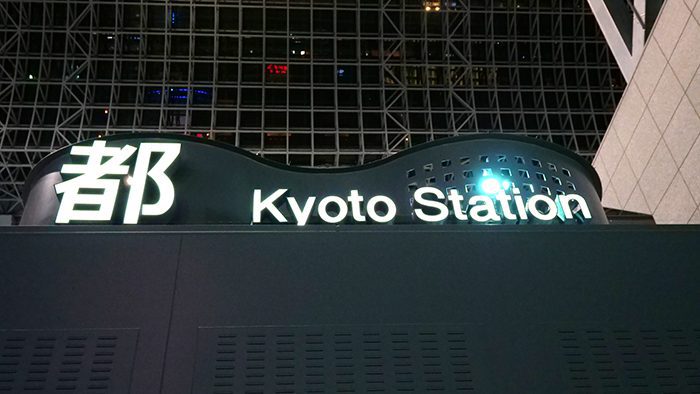
As Kyoto doesn’t have its own airport, you’ll probably arrive in the city by train. If you do, you might have the good fortune of passing through Kyoto Station, one of Japan’s most prominent transportation hubs. The station is housed in one the country’s biggest buildings, a 15-story behemoth that can be found across the street from the famed Kyoto Tower in the city’s downtown area. The current Kyoto Station was built in 1997, though the station’s roots date back to February of 1877.
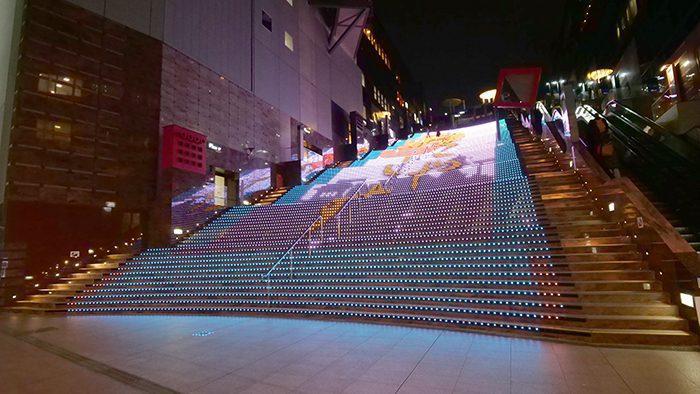
In addition to housing a railway station, the Kyoto Station building is also home to government facilities, a hotel, a department store, a shopping mall, restaurants, and even a movie theatre! The futuristic, technologically-advanced building was one of the first of its kind in the tradition-driven city of Kyoto when it was built in the 1990s, but other modern buildings were erected soon after its construction was complete.

Head up to the station’s top floor to get some great views of the city and don’t miss out on the light show that plays on the station’s staircases! If you want to check out a modern marvel in the midst of thousands of years of history and cultural heritage, there’s no better place than Kyoto Station!

If you’re looking to experience an ancient Japanese temple in Kyoto but would prefer to avoid the crowds and steady stream of tourists at Kiyomizu-dera Temple, Kōmyō-in Temple in the Higashiyama ward is the perfect alternative. Kōmyō-in Temple is a sub-temple of the Tōfuku-ji Temple, which was founded in 1236 and is considered one of the “five great Zen temples of Kyoto.”
Check out What to See and Do in Xi’an, China
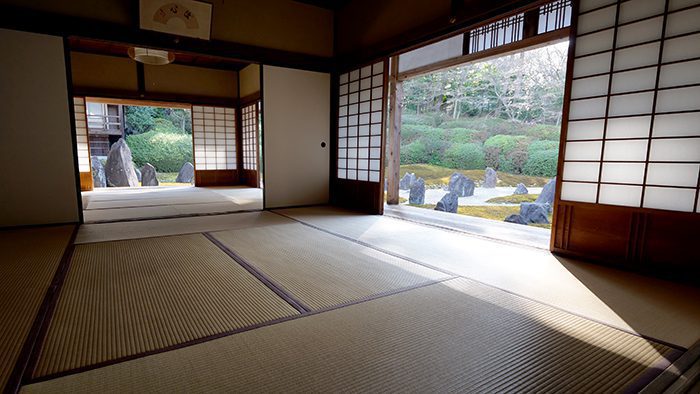
Kōmyō-in Temple was established in 1391 and is famous for its traditional dry landscape garden, Hashin-no-Niwa, a quiet and peaceful environment that consists of large stones, which represent mountains, arranged in three circles atop white gravel and moss. The gravel is raked weekly by the head monk and represents the ocean. You can’t step into the garden, so you’ll have to enjoy it from the wooden walkways. Overlooking the garden is a teahouse called Ragetsu.

Remember, when visiting temples in Japan, it is customary to take off your shoes before you enter. Inside, you’ll find a magnificent praying hall containing a beautiful Buddha statue, as well as other rooms with photographs of the temple on the walls. Kōmyō-in Temple is a remarkable place, and easily one of the top things to see and do in Kyoto!
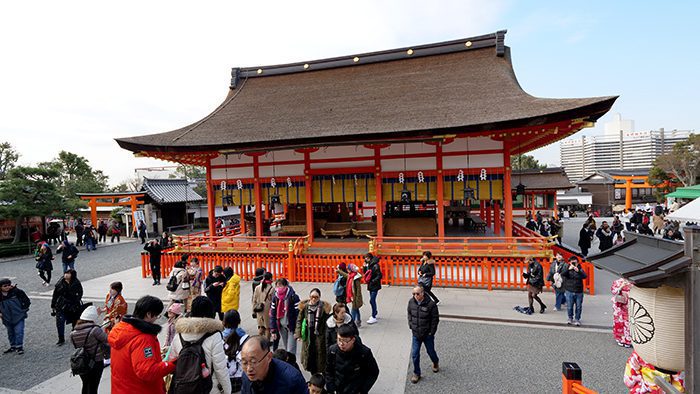
At the base of Mount Inari, a sacred, 764-foot-high mountain that is named after the Shinto god of rice, is the Fushimi Inari Shrine, one of the most popular and most photographed attractions in Kyoto. This Shinto shrine’s first structures were built in the year 711 on Inariyama Hill before the shrine was relocated in 816.
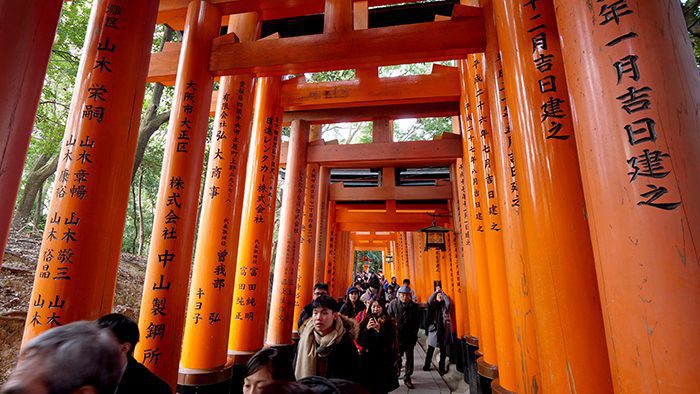
The shrine, which is dedicated to the rice god Inari (also the patron of business), also contains the stunning Romon Gate at its entrance and a main hall, or hoden, but the feature that attracts visitors from around the world are the 10,000 vermilion torii gates that straddle a network of trails that that go up the mountain behind the main buildings and take at least two hours to fully explore.
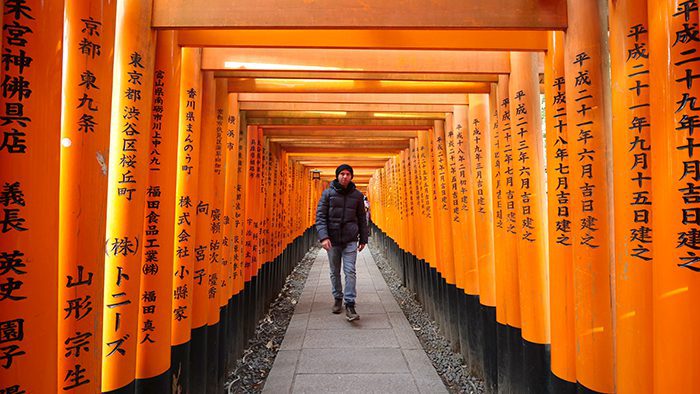
Each of these gates, known collectively as Senbon torii, was donated by a Japanese businessman and is inscribed with the name of the businessman’s company and the date it was donated. This tradition, which dates back to the Edo period, is meant to get Inari to grant a wish, or to thank him for a wish that came true.

I recommend the hike up the trails if you have multiple days in Kyoto, but if you’re crunched for time like I was, even a partial exploration of the gates is an amazing experience. Afterward, check out the miniature torii gates that are stacked in front of the holy rock. Estimate how heavy you think it will be and then pick it up to see what kind of luck you’ll have going forward!

One of the main things I wanted to do in Kyoto was try some of Japan’s famous street food, and when I visited the market near Fushimi Inari Shrine, I was not disappointed at all by the incredible selection there. Before my guide Kosuke and I even entered the market properly, the mouthwatering aroma of cooking food wafted over us and had me pumped to try as much as I could!
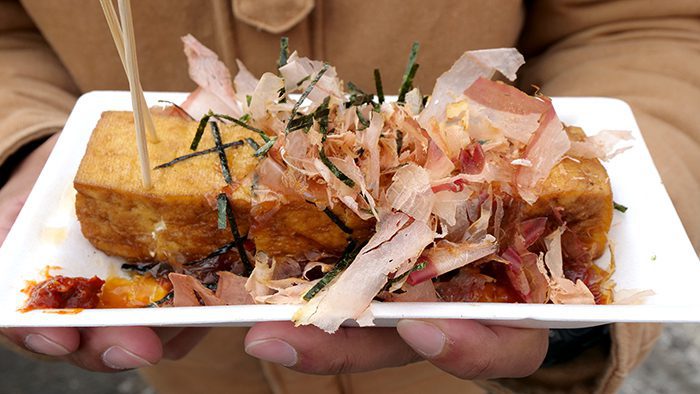
I suggest starting off with takoyaki, a small, soft, ball-shaped fritter that contains red ginger, cabbage, and big, succulent pieces of octopus, and are topped with a delicious takoyaki sauce and bonito flakes. You can get six for 500 Yen, or roughly $4.46 U.S. Just don’t burn your mouth on them! Let them cool off a bit; they’re hot!
Check out 5 Places You Must Eat at in Kyoto, Japan
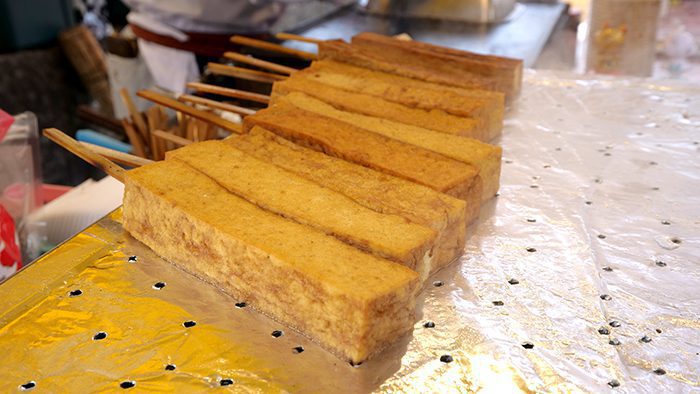
I also highly recommend trying some skewered tofu steak (400 Yen/$3.57 U.S.), which comes with ponzu sauce, sriracha, and ginger, and is topped with shredded seaweed and bonito flakes. It’s out of this world!
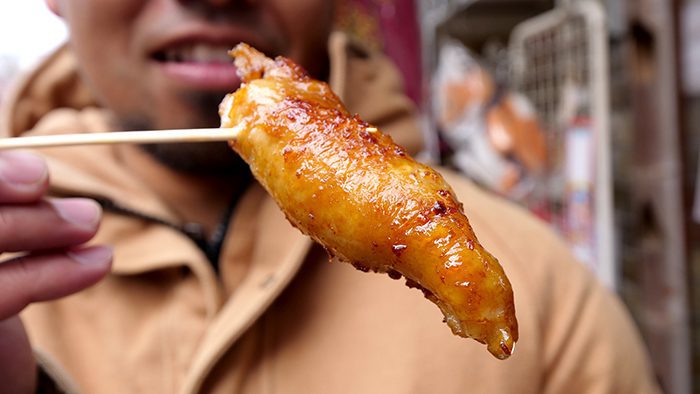
The final food you should try is the chicken skin gyoza (300 Yen/$2.68 for 3 gyozas), which is a potsticker that is wrapped in crispy, fatty chicken skin that is browned on a grill. The chicken skin changes the texture and entire flavor profile of the gyoza. It’s the best gyoza I’ve ever had! It’s phenomenal, as is everything else you can get at the market. Trying Japanese street food at the Fushimi Inari market is definitely one of the best things to see and do in Kyoto!

With at least 2,000 houses of worship scattered around Kyoto, it can be extremely overwhelming to figure out which ones to visit if you have a limited amount of time in the city. One you absolutely must visit is Otagi Nenbutsu-Ji Temple, which you’ll find in the Arashiyama neighborhood and is a great place to enjoy on your way to or from the nearby Arashiyama Bamboo Grove.
Check out 15 Things to Do in Beijing, China
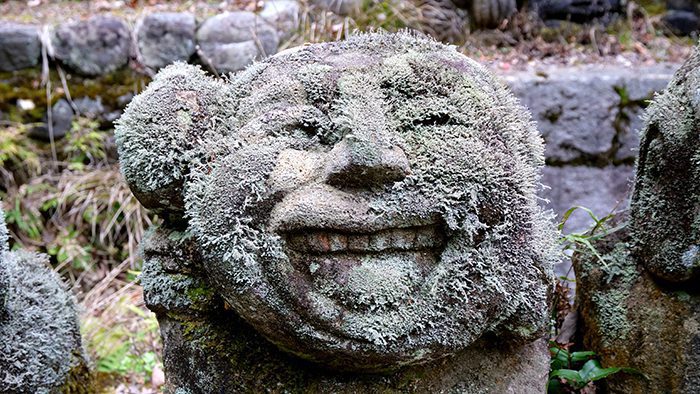
This Buddhist temple’s origins date back to the year 766, but after many natural disasters damaged or destroyed it over the centuries, including floods and typhoons, the temple was dismantled, repaired, and restored beginning in 1981.
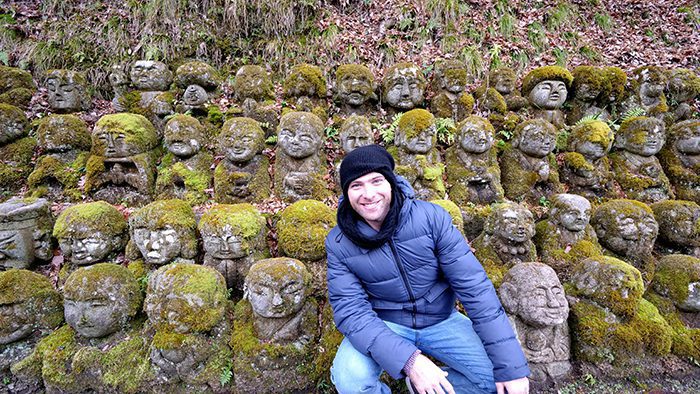
One of the main projects during this restoration period—and one of the best reasons to visit Otagi Nenbutsu-Ji Temple—is the 1,200 stone statues of rakan, or the followers of Buddha, that cover the nearby hillside. Each statue is unique, and while some of them depict the rakan deep in prayer, others are more fun and whimsical and show the rakan laughing, smiling, or even holding modern items like surfboards, tennis racquets, and baseball bats!
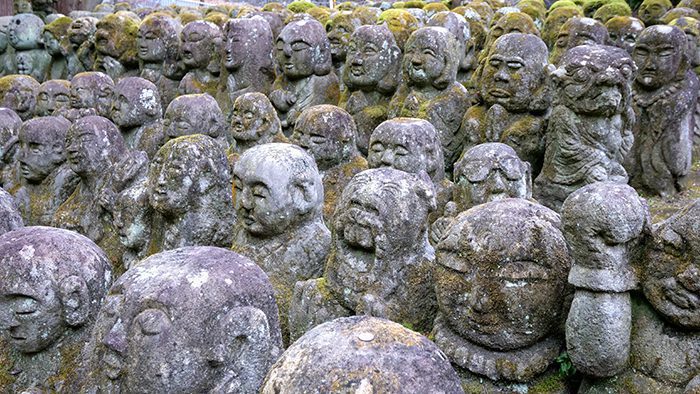
Many people skip Otagi Nenbutsu-Ji Temple because it’s quite far from the city, but I highly recommend taking the time to check it out for its sheer uniqueness. Visiting this temple and hillside is an absolute must when you come to Kyoto!

Tofu is a polarizing food, even among foodies, but I absolutely love it. After I toured Kiyomizu-dera Temple, I did a quick search for a place where I could have an authentic Japanese lunch and came across Okabeya, a wonderful restaurant that specializes in tofu hotpot!

I cannot recommend their Yudofu tofu hot pot meal enough! This tofu-based meal is a small but deliciously filling spread that consists of yudofu (hot tofu that is boiled in a simmering pot right at your table) that you can add flavorful soy sauce and wasabi to; a sweet and garlicky sesame tofu; skewered fried tofu with an incredible, cheese-like miso on top; a nice variety of lightly-battered tempura vegetables; a succulent shrimp; sticky rice; and pickles.

I washed it all down with an order of sake, and the entire meal came to 2,830 Yen, or about $25.40 U.S. It was worth every dime

During my two days in Kyoto, I stayed at an Airbnb that was within walking distance of several important locations, including Kyoto Station, Kyoto Tower, and the gorgeous Higashi-dori Honganji Temple complex, also known as the Eastern Temple of the Original Vow. Higashi-dori Honganji Temple was originally built in 1604 after the Japanese shogun worried that the first Honganji temple, which promoted the Pure Land Buddhist teachings of the monk Shinran, would become too powerful.
Check out 20 Things You Must Do in Shanghai, China
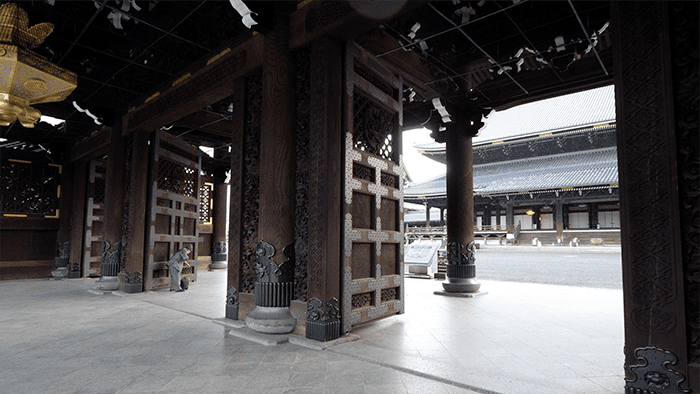
The Honganji sect was split, and Higashi-dori Honganji Temple was built a few blocks away from the original temple, which then took the name Nishi Honganji, or the Western Temple of the Original Vow. Together, they are the two head temples of the Jodo Shinshu sect of Pure Land Buddhism. Higashi-dori Honganji Temple’s Goei-do, or Founder’s Hall, is the largest wooden building in the city, and a statue of Amida Buddha can be found in Amida Hall.
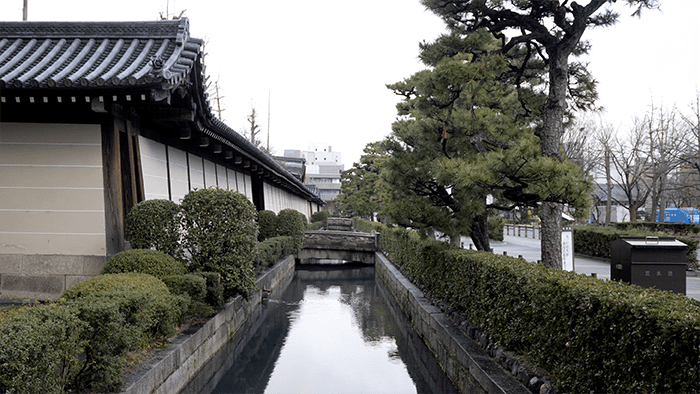
The temple’s grounds also boast several ornate gates, a reception hall, a gallery, an audio-visual hall, and exhibits connected to the temple’s rebuilding in the 19th century. Best of all, admission to the temple is free, so be sure to add Higashi-dori Honganji Temple to your list of things to see and do in Kyoto!
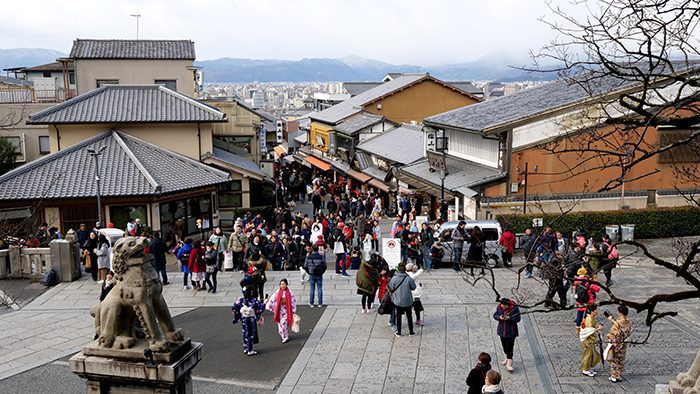
The city of Kyoto is a history lover’s dream. Here, the traditional elements of the city aren’t just remnants of the past, they’re also a celebrated part of the city’s present and future. From stunning shrines to magnificent temples, and delicious traditional food to modern interpretations of longtime favorites, this city is a seemingly endless source of fascination for curious world travelers. Book a trip to Kyoto today to see for yourself!

NOTE: Whenever you travel, I suggest you purchase travel insurance to protect yourself in case any emergency situations come up. In my opinion, AXA Travel Insurance is the very best because it covers a wide array of issues. Buy your AXA Travel Insurance protection plan here!
Counter
101 Countries • 1432 Cities
Gatis says:
Japan is something magical. Never felt so peaceful and safe as in this country. As soon as you leave Japan, you want to come back again!
Can’t stop exploring this beautiful corner of the World! 🙂
Thank you David for bringing me back!